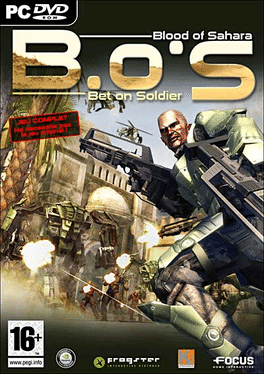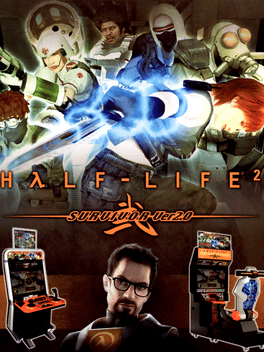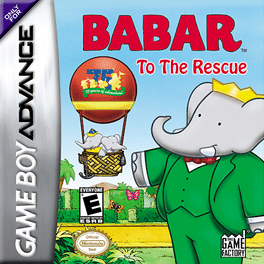New Games - Page 10246
-
Sega Ages 2500 Vol. 24: Last Bronx - Tokyo Bangaichi
2006
This game is a port of Last Bronx. It is very similar to the arcade version, but features extra options. These options differ from the extras seen in the Sega Saturn version though. -
Soul Link Extension
2006
Soul Link Extension
2006
An all-ages release of the original game with the adult elements removed but with additional material. -
Mobile Suit Gundam SEED Destiny: Rengou vs. Z.A.F.T. II
2006
It is the sequel to Gundam Seed: Rengou vs. Z.A.F.T. with a slightly revised fighting system, new units and characters, and updates to old characters. Playable characters and units are taken from Gundam SEED as well its sequel Gundam SEED Destiny. Whereas the console version of its prequel had only a few units and playable characters from the beginning of Gundam SEED Destiny such as the Impulse Gundam, RvZ2 includes characters and units from the entire series, such as the Strike Freedom Gundam and Infinite Justice Gundam. -
Bet on Soldier: Blood of Sahara
2006
Bet on Soldier: Blood of Sahara is an stand-alone expansion pack for the original Bet on Soldier. -
Kidou Senshi Gundam SEED Destiny: Rengou vs. Z.A.F.T. II Plus
2006
Kidou Senshi Gundam SEED Destiny: Rengou vs. Z.A.F.T. II Plus is an Action game, developed and published by Bandai Namco Games, which was released in Japan in 2006. -
Zombie Hunters 2
2006
Zombie Hunters 2
2006
Sizzling sword-wielding sisters, crazy combat action & hardcore, blood-curdling horror! Fight onslaught after onslaught of terrifying zombies to get to the source of a mysterious disease that turned a once-pleasant city into a gateway to hell! Increase your attack power by splattering yourself in Zombie blood! As you go into berserk mode, you'll kill everything in sight! Control 3 sets of tough sisters as you slice & dice zombies with loads of cool attacks. Increase your character's strength and skill to unleash a variety of jaw-dropping combination attacks. Can you survive this onslaught of flesh and blood?! -
Atelier Iris 3: Grand Phantasm
2006
star 5.9The 8th core Atelier game and final game in the Iris series. -
Chromehounds
2006
Chromehounds
2006
star 7.4With dozens of parts to choose from, players are able to create their own giant mech. With a built in squad mechanic, Chromehounds' biggest draw was it's persistent online play. -
Half-Life 2: Survivor
2006
An Arcade version of Half Life 2 that was only released in Japan and is missing many plot elements from the PC version. -
Pirates of the Caribbean: The Legend of Jack Sparrow
2006
star 4.1Pirates of the Caribbean: The Legend of Jack Sparrow is an action-adventure video game by American developer 7 Studios for the PlayStation 2 and Microsoft Windows. It features playable levels based on the experiences of Captain Jack Sparrow, voiced by Johnny Depp who portrays him in the movies, after the events of Pirates of the Caribbean: The Curse of the Black Pearl. The game includes action, puzzles and humorous cutscenes. -
Ruff Trigger: The Vanocore Conspiracy
2006
star 6Ruff Trigger: The Vanocore Conspiracy is a 2006 action-platform video game developed by Playstos Entertainment and published by Natsume in North America and by ZOO Digital Publishing in Europe for the PlayStation 2. The game was released in North America on June 28, 2006 and in Europe on August 25, 2006. -
Juiced: Eliminator
2006
Juiced: Eliminator
2006
star 6This version of Juiced is built specifically for PSP, with unique multiplayer games and and an expansion on the crew and pink-slip racing features. The game was built from the ground up on PSP, with new cars, tracks, characters and game modes. The built-in wireless connectivity on the PSP lends itself to expanding the multi-player options, including multiplayer crew races, pink slip racing and the all new ‘Eliminator’ mode where the slowest driver per lap is removed from the competition, and the winner is the last one left in the race. -
Babar: To the Rescue
2006
Babar: To the Rescue
2006
On a beautiful day in Celesteville, Babar's two sons, Pom, Alexander and his cousin Arthur are playing hide and seek with the monkey Zephir. In the courtyard of the castle, two huge hot air balloons are tied to the ground and Pom and Alexander decide to use one of them as a hiding place. Suddenly the rope holding the balloon is accidentally loosened and the balloon slowly rises up, high into the sky, drifting away with the wind. When Babar finds out, he quickly gets in the second hot air balloon and flies off into the wilderness to rescue his two sons... -
Commander Keen: The Keys of Krodacia
2006
The Keys of Krodacia is the first complete Keen 4 mod, produced by Ceilick with music composed by KeenRush. It is the first episode of the unofficial "The Universe Is Toast" trilogy, and is often referred to as Keen 7. It was released in June 2006, and then re-released in 2009 with new music, additional content and bug fixes. -
Asobi ni Iku yo! Chikyuu Pinch no Konyaku Sengen
2006
Asobi ni Iku yo! Chikyuu Pinchi no Konyaku Sengen is an Adventure game, developed and published by Idea Factory, which was released in Japan in 2006. -
Pirates of the Caribbean: Dead Man's Chest
2006
Pirates of the Caribbean: Dead Man's Chest is an action-adventure game based on the film of the same name, starring Jack Sparrow. -
Hyper Wars: The Mega Firestorm
2006
Hyper Wars: The Mega Firestorm is a freeware vertical shooter with a gameboyesque graphical style. -
Hi Hi Puffy Ami Yumi: Genie & The Amp
2006
star 6.5Available for the first time ever on Nintendo DS, Hi Hi Puffy AmiYumi: Genie & the Amp follows the fantastic adventures of two very cool pop stars from Cartoon Network’s animated rock series Hi Hi Puffy AmiYumi. The girls are way behind in recording their new album because they’ve tripped over a massive writer’s block. Luckily, they discover a genie behind a dusty amplifier who helps them battle across 10 unique time periods such as Ancient Rome and the Wild Wild West, to gain the musical notes needed to play the ultimate world tour. Fans will play as Ami or Yumi as they use their skills to solve challenging puzzles, battle scary enemies and unlock fun mini-games in single player mode or multiplayer cooperative mode for up to two players via the wireless feature for Nintendo DS. -
Trilby's Notes
2006
Trilby's Notes
2006
star 8.4The third installment of Ben Croshaw's "Chzo Mythos" features the infamous cat burglar Trilby, as he proceeds to track down the cursed wooden idol, that contains the murderous soul of John DeFoe, at secluded Clanbronwyn Hotel.




















